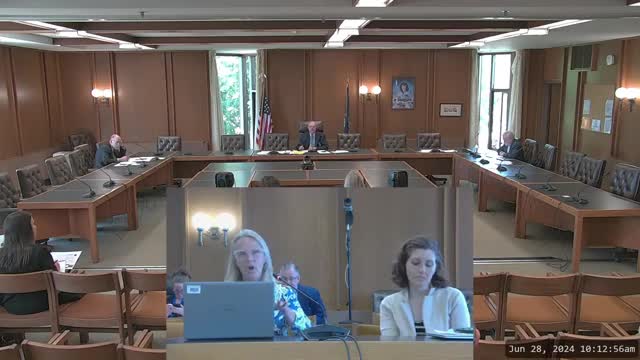New strategies unveiled to enhance youth mental health care
June 29, 2024 | Health, Human Services and Elderly Affairs, House of Representatives, Committees , Legislative, New Hampshire

This article was created by AI summarizing key points discussed. AI makes mistakes, so for full details and context, please refer to the video of the full meeting. Please report any errors so we can fix them. Report an error »

In a recent government meeting, officials discussed the evolution and structure of a tiered mental health care system designed to address the changing needs of families and children. The system is organized into five tiers, ranging from basic screening and assessment to acute psychiatric care, reflecting a comprehensive approach to mental health services.
The first tier focuses on entry-level services, including routine health screenings and assessments conducted by pediatricians and family doctors. This foundational level aims to establish trusted relationships between families and healthcare providers, emphasizing the importance of early intervention.
As needs escalate, the second tier introduces outpatient treatments for specific mental health conditions, such as anxiety and depression, often provided in school settings by trained behavioral health specialists. This tier serves as a bridge between general wellness and targeted treatment.
The third tier is characterized by more intensive support, aimed at preventing escalation into higher levels of care. It involves a collaborative approach, bringing together families, caregivers, and providers to create a wraparound support system tailored to individual needs.
The fourth tier encompasses residential treatment options, which are critical for some families and youth. This level includes various types of care, from structured behavioral health treatment to community-based services, with the goal of keeping youth connected to their families and communities whenever possible.
Finally, the fifth tier represents acute hospitalization for children in immediate need of intensive care. This level is reserved for the most severe cases, ensuring that children receive the necessary stabilization and treatment.
Officials highlighted the importance of addressing both behavioral and mental health issues, recognizing that early intervention and family support are crucial in preventing more severe problems later on. The discussion underscored the need for a coordinated effort to provide resources and education to families, particularly in the early stages of a child's development.
As the meeting concluded, participants expressed a commitment to refining the system and solicited feedback to enhance its effectiveness in meeting the diverse needs of children and families across the community.
The first tier focuses on entry-level services, including routine health screenings and assessments conducted by pediatricians and family doctors. This foundational level aims to establish trusted relationships between families and healthcare providers, emphasizing the importance of early intervention.
As needs escalate, the second tier introduces outpatient treatments for specific mental health conditions, such as anxiety and depression, often provided in school settings by trained behavioral health specialists. This tier serves as a bridge between general wellness and targeted treatment.
The third tier is characterized by more intensive support, aimed at preventing escalation into higher levels of care. It involves a collaborative approach, bringing together families, caregivers, and providers to create a wraparound support system tailored to individual needs.
The fourth tier encompasses residential treatment options, which are critical for some families and youth. This level includes various types of care, from structured behavioral health treatment to community-based services, with the goal of keeping youth connected to their families and communities whenever possible.
Finally, the fifth tier represents acute hospitalization for children in immediate need of intensive care. This level is reserved for the most severe cases, ensuring that children receive the necessary stabilization and treatment.
Officials highlighted the importance of addressing both behavioral and mental health issues, recognizing that early intervention and family support are crucial in preventing more severe problems later on. The discussion underscored the need for a coordinated effort to provide resources and education to families, particularly in the early stages of a child's development.
As the meeting concluded, participants expressed a commitment to refining the system and solicited feedback to enhance its effectiveness in meeting the diverse needs of children and families across the community.
View full meeting
This article is based on a recent meeting—watch the full video and explore the complete transcript for deeper insights into the discussion.
View full meeting
